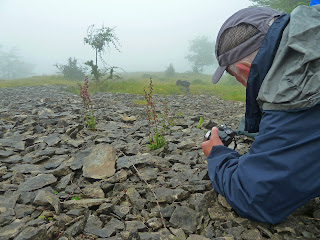Monday 30th July 2012
After the technical brilliance of the Olympic opening ceremony and the exciting sporting events of the first two days a quick visit to John Williams and his Moorland Garden for a little relaxation and peace in this special place. I've posted blogs previously on John's very special garden which he has created over the last 36years in this harsh moorland environment near to Hebden Bridge in West Yorkshire.
Even though the weather has been cloudy and wet John's 7acre garden this year has thrived and is reaching it's peak this week. With the planting of trees many years ago this is now a sheltered garden and can only be described as an oasis with it's own micro climate in a cold moorland Pennine valley.
John's speciality......Himalayan Lily (Cardiocrinum Gigantium)
John can be seen reading his paper on his front patio
With a little help from John, a moss garden is developing in his restyled newer garden on the western side of his house, this wet cool climate is ideal for mosses
So if ever you are up in this part of the world pay a visit to this delightful garden, you won't be disappointed.
After the technical brilliance of the Olympic opening ceremony and the exciting sporting events of the first two days a quick visit to John Williams and his Moorland Garden for a little relaxation and peace in this special place. I've posted blogs previously on John's very special garden which he has created over the last 36years in this harsh moorland environment near to Hebden Bridge in West Yorkshire.
Even though the weather has been cloudy and wet John's 7acre garden this year has thrived and is reaching it's peak this week. With the planting of trees many years ago this is now a sheltered garden and can only be described as an oasis with it's own micro climate in a cold moorland Pennine valley.
John's speciality......Himalayan Lily (Cardiocrinum Gigantium)
John can be seen reading his paper on his front patio
With a little help from John, a moss garden is developing in his restyled newer garden on the western side of his house, this wet cool climate is ideal for mosses
So if ever you are up in this part of the world pay a visit to this delightful garden, you won't be disappointed.





























































































